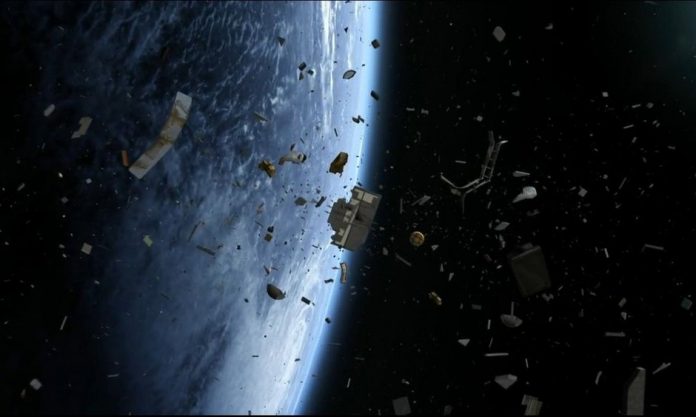For more than 50 years, humans have been breaking the tether of Earth’s gravity and launching objects into space, but remnants of these stellar explorations are left circling the planet, posing a risk to future missions.
At the moment, NASA has tracked more than 500,000 pieces of orbital debris, or space junk, trapped by gravity and traveling at speeds up to 17,500 miles per hour.
“NASA uses the term ‘orbital debris’ to describe human-made debris in Earth orbit and uses the term ‘space debris’ for orbital debris and micrometeoroids, which come from asteroids and comets,” Chief of NASA’s Orbital Debris Program J.C. Liou said.
Orbital debris can consist of anything such as flecks of paint or bits of metal from spacecraft to larger debris like entire defunct satellites. Each day at least one piece of debris plummets back to Earth, according to NASA.
“In general, orbital debris dominates the near-Earth environment below about 4,000 km altitude,” Liou added.
Most debris burns up during atmospheric reentries. However, some satellite components have survived the reentry process and landed on the ground, Liou said.
Some examples include a propellant tank of a Delta 2 launch vehicle, which landed near Georgetown, Texas, in January 1997.
“Fortunately, no injuries or property damage due to debris reentries have been reported,” he said.
In space, however, some of the smallest pieces of debris pose the most significant risks to both crew and spacecraft, Liou said.
“According to a recent NASA independent study, orbital debris in the millimeter-sized regime represents the highest penetration risk to most uncrewed spacecraft,” Liou said.
The International Space Station is much better protected against orbital debris than uncrewed spacecraft, he added, stating that the space station’s modules are equipped with debris impact protection shields. These modules are protected against orbital debris about 1 cm and smaller.
“However, when astronauts are conducting a spacewalk outside the ISS, orbital debris as small as 0.3 mm can penetrate certain portions of the suits the astronauts are wearing,” Liou added.
In order to mitigate the risk that orbital debris poses to both spacecraft and crew, NASA conducts observations and has guidelines in place to maneuver around it.
“For the space situational awareness and orbital debris community, ‘tracking’ means using sensors to detect objects, conduct routine follow-up observations and then use the data to develop and update objects’ orbits on a regular basis,” Liou said.
The orbits of these tracked objects can then be used for assessments and potential collision avoidance maneuver operations.
The U.S. Joint Space Operations Center (JSpOC), uses its global sensor network to track objects about 10 cm and larger in low Earth orbit, the region below 2,000 km altitude.
For objects ranging 1 meter and larger in geosynchronous orbit, or the region around a 36,000 km altitude, NASA uses different ground-based radars, telescopes and space-based data to make observations.















